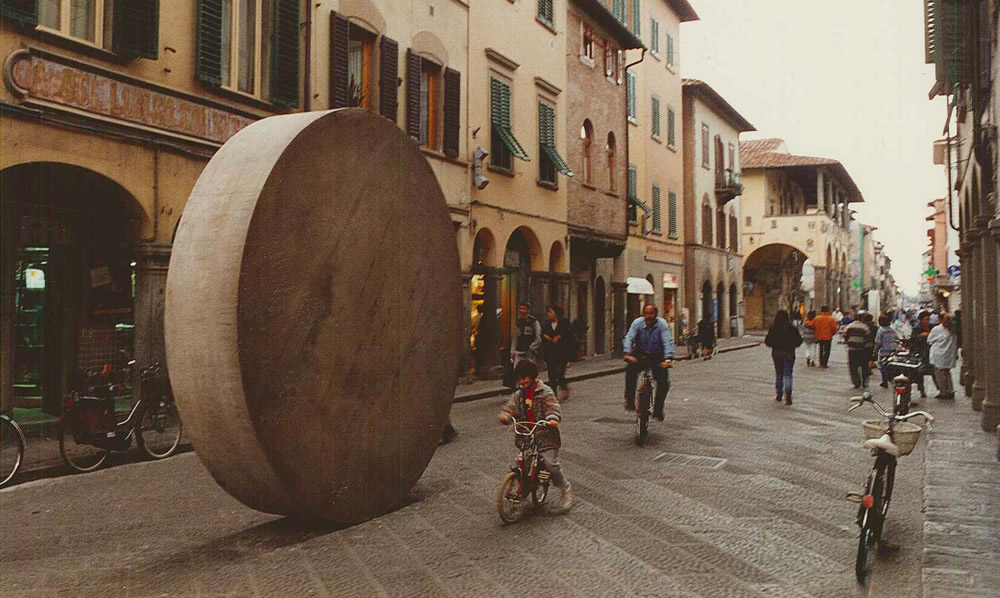Mauro Staccioli was born in Volterra in 1937 and graduated from the Art Institute in his native town in 1954. In 1968, he relocated to Milan, where he taught at the Art High School of Brera. He would later become the principal of the school. He exhibited his works at the Venice Art Biennale in 1976 and 1978. In the field of installation art, worthwhile mentioning are his environments placed, respectively, in the clearing opposite the Centre for Contemporary Art Luigi Pecci in Prato (1988), in the main square of the Olympic Park in Seoul (1988), for the Parc Tournay-Solvay in Brussels (1996), and at the National Gallery of Modern Art in Rome (2011). He is an associate member of the Belgian Académie Royale des Sciences, des Lettres et des Beaux-Arts and a member of the Accademia Nazionale di San Luca (since 2008).

– title: Corso Italia
– date: 1996
– medium: installation artwork made up of five concrete wheels
– size: environment, 9.8-ft diameter wheels
– description: The Corso Italia installation (1996) consists of five large concrete wheels placed along the main street – that is, Corso Italia – in the historic centre of San Giovanni Valdarno. This installation transforms the vision of the surrounding space, stirring a dialogue between the sculpture and the urban setting hosting it. The result is that San Giovanni Valdarno is not merely a backstage, but a grounding element, an active and structural part of the work. This is a theme that the artist has addressed since the 1970s, in particular after the Volterra ’73 event curated by Enrico Crispolti, when Staccioli began investigating the role of sculpture in direct connection with the specific place for which it was designed. In the case of Corso Italia, the artist created a tangible sign of a passage, along the north-south axis, highlighting the border between the town and the surrounding countryside.
When it comes to the installation conceived for San Giovanni Valdarno, the reflections on the surrounding space are further emphasised by the specific shape chosen for the artwork – a wheel, which brings to mind the precariousness of balance and which best represents contemporary daily life according to the artist.